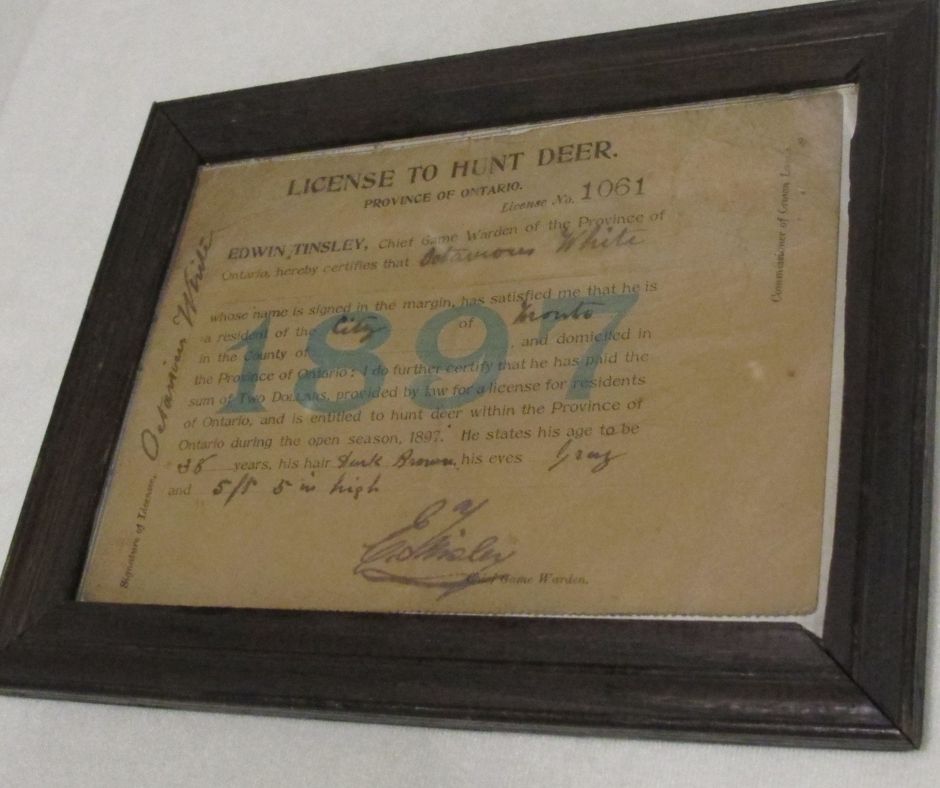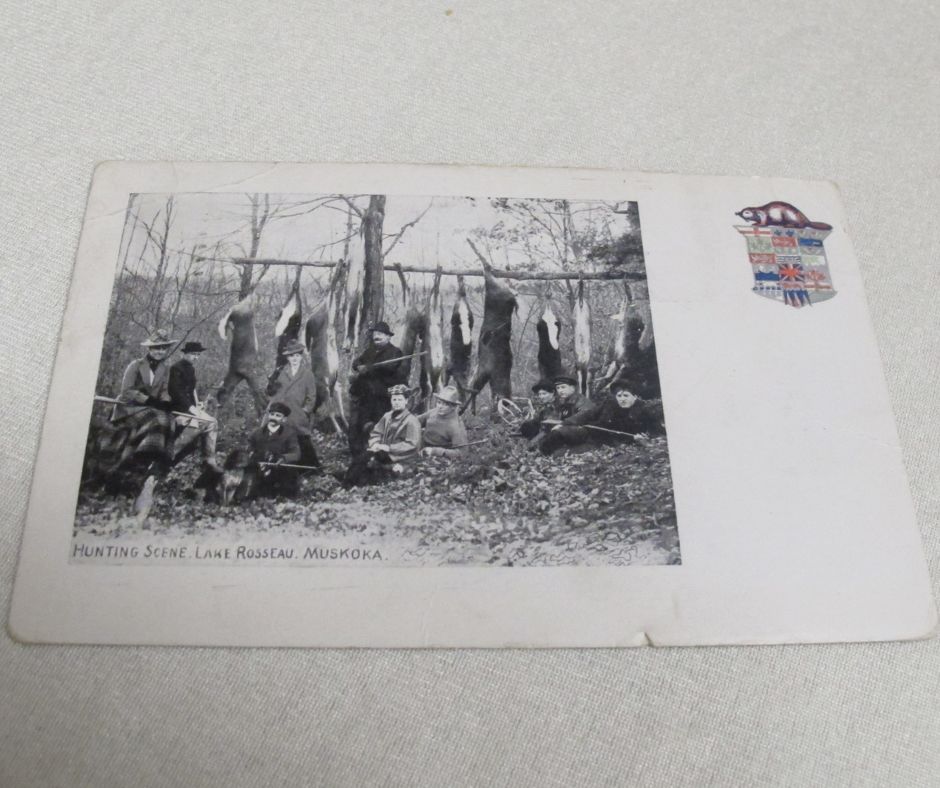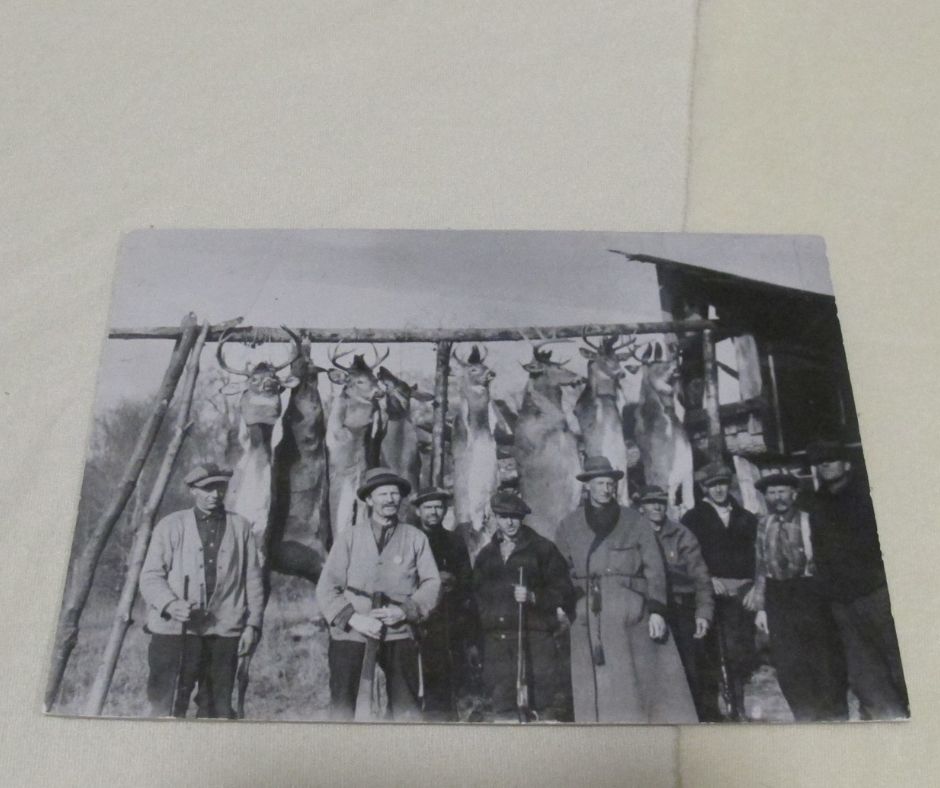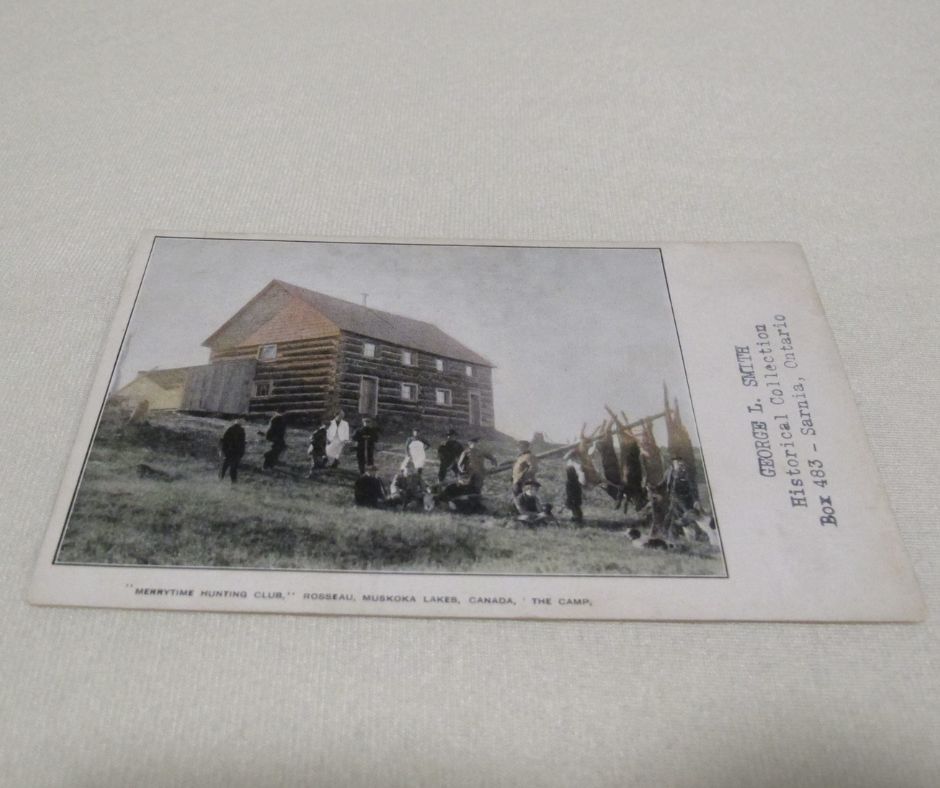Hunting in Muskoka
During the beginning of a wintery January, let’s explore a traditional Muskokan winter pastime: hunting!
Hunting License
976.10.7
In 1897, when this License was issued, the Chief Game Warden for Ontario was Edwin Tinsley. The cost for a Deer License at this time was $2.
The Ontario Board of Game and Fish was only 5 years old in 1897, and was created to manage fish and wildlife resources in Ontario. Today, they are known as the Fish and Wildlife Division of the Ministry of Natural Resources and Forestry.

Hunting at Monteith
969.70.158
This postcard photo shows George and Florence Monteith and their hunting party from Monteith House, a hotel owned and operated by the former during the 1920s. It was taken by photographer Frank Micklethwaite.
Monteith House was known as a lively resort “where gaiety and high jinks were the order of the day” (Muskoka’s Grand Hotels, Barbaranne Boyer). Souvenirs like this showcase hunting as one of the many activities visitors could do at the resort.

Pelts
Taxidermy was and is still sometimes used as decoration. These pelts are part of a collection purchased for display on the wall of a cottage on Squirrel Island. This pelt collection includes the pelts on display in our Natural Life Gallery.
Top – bottom
988.26.5
Blue fox – Vulpes lagopus
During the Canadian fur trade, as beavers began to decrease in number, other pelts, such as fox, became popular. These furs were considered “fancier” and more elite than beaver furs.
988.26.4
Muskrat – Ondatra zibethicus
Though a single muskrat only yields about a pound of food, muskrats were hunted in large abundance before and after European contact. Muskrats can be hunted with traps, by bow and arrow, or by scaring the animal out of its den.
988.26.18
Otter – Lutra canadensis
Otters have very short dense fur that is very good at keeping in heat, which makes otter fur great for mittens and hats.



A Successful Hunt
979.5.1r
This photo shows nine men, five with guns, standing in front of eight deer hanging on a line. The original photo was likely taken in the Windermere area.
Before Muskoka was established as a location for the wealthy to relax at extravagant resorts, it was more known as a destination for humble hunters and fishers. While the Indigenous population had been stewarding and hunting in the area for millennia, the late 1800s and early 1900s saw the arrival of the first “hunting tourism” by Europeans.

Promoting Recreational Hunting
985.3.1b
Postcards were often an effective form of advertising for different hunting clubs and resorts. Cards from the “Merrytime Hunting Club” have been found as far as Washington D.C.
The early 1900s represented a shift from hunting for food to hunting for leisure. Muskoka’s bountiful forests and wildlife became the settler’s playground.

Read More